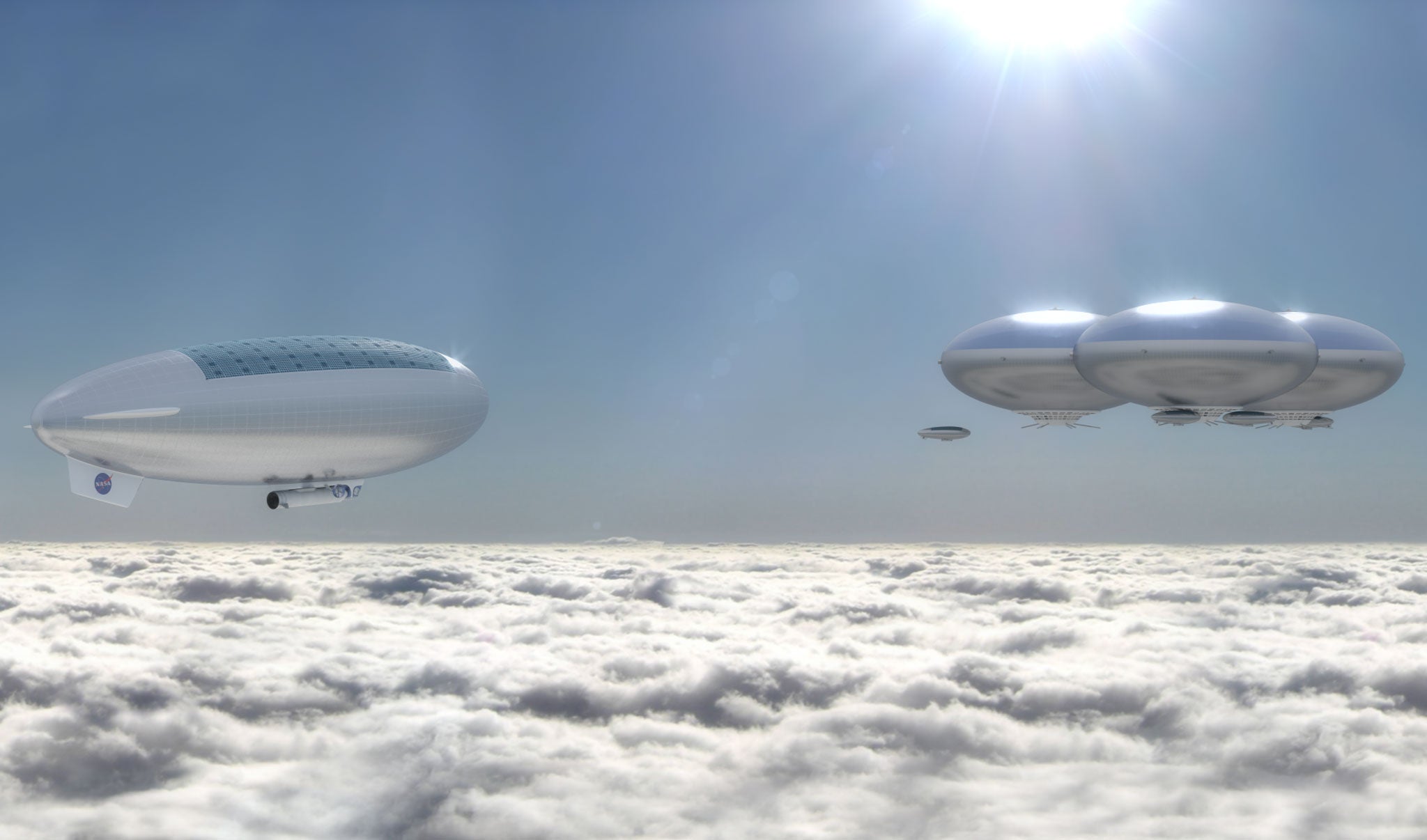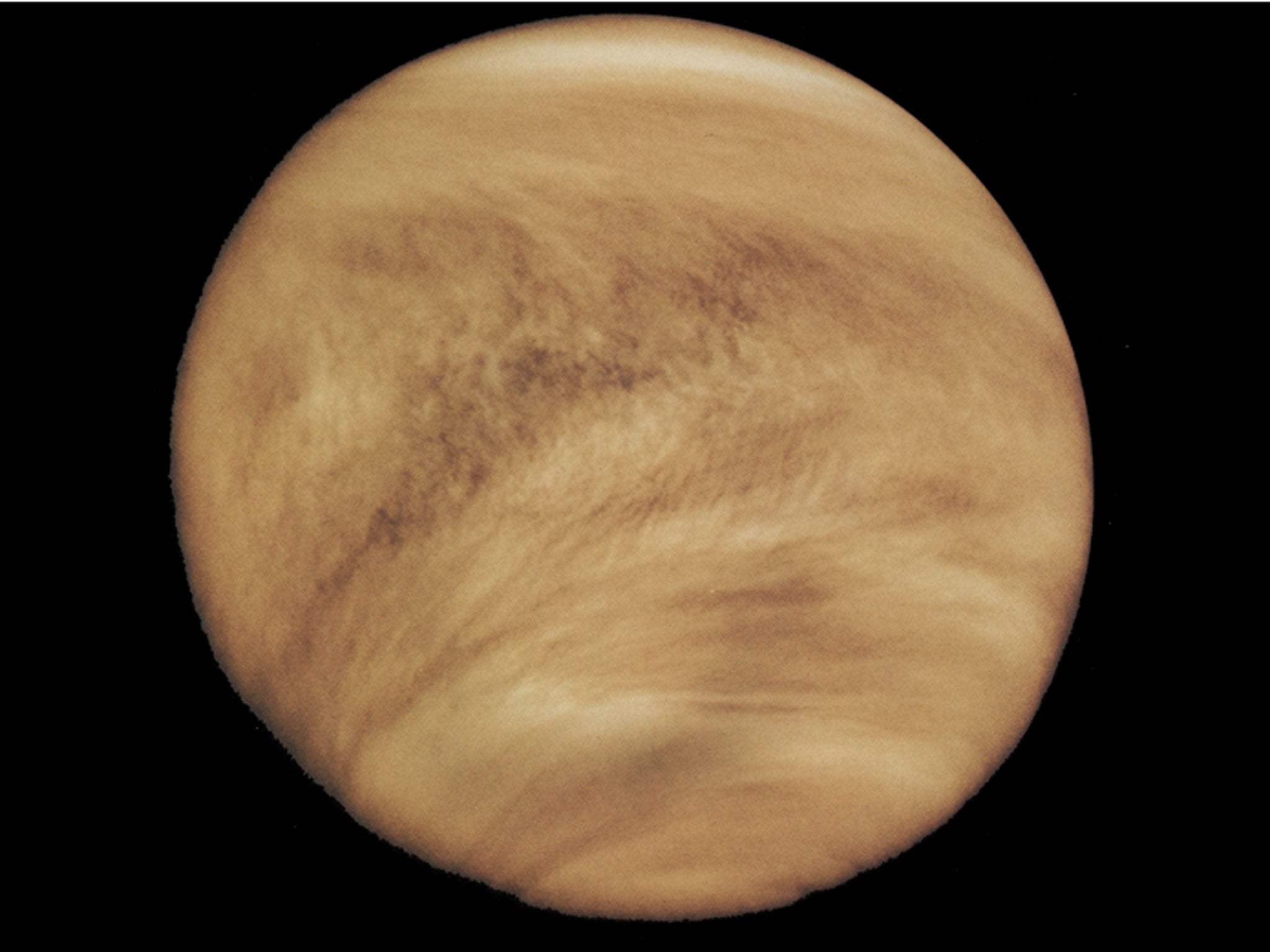Nasa planning to build cloud cities in airships above Venus
Planet’s surface is inhospitable to humans — but dangling about 30 miles above it is almost perfect

Nasa scientists are working on a city made out of huge balloons in the clouds above Venus, which will allow astronauts to explore the planet without venturing onto its hostile surface.
The airship-like balloons would carry two astronauts each on a 30-day mission.
The project, named High Altitude Venus Operational Concept, or Havoc, is just a proposal at the moment, designed by the Systems Analysis and Concepts Directorate (SACD) at the centre. But the centre hopes to keep working on it until it is ready to actually take astronauts to Venus, or just off it.
Venus is in many ways a better bet for space exploration than Mars. It's nearer to us, closer in size and it has a density and chemical composition more like Earth — but it’s also completely inhospitable.
The planet is much hotter than Earth, at around 462 degrees Celsius, and has an atmospheric pressure around 92 times greater. It’s also got huge volcanoes and an acidic cloud layer. Even probes that have been sent to the planet have burnt up and died shortly after arriving.
While the conditions on Venus keep humans from venturing down there, staying about 30 miles above the planet would keep astronauts in conditions mostly similar to Earth. The atmospheric pressure is comparable, and gravity is just slightly lower. The temperature is warm but the ship would be able to keep the astronauts cool enough.

The challenges for the mission would be getting the airship to Venus — and then, since it will be wrapped up, inflating it there. Before it is used scientists will also have to be confident that the ship and the solar panels that will power it can withstand the sulphuric acid in the atmosphere and the other strain it will be put under while it floats above the planet.
But if they can work on the technology, “missions to the Venusian atmosphere can expand humanity’s future in space”, the SACD says.
Join our commenting forum
Join thought-provoking conversations, follow other Independent readers and see their replies
Comments